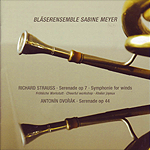This review page is supported in part by the sponsors whose ad banners are displayed below |
 |
 |
You know how the doc goes "say aaaah" only to stick his spatula down your throat and stare at it through his little magnifying glass? That sense of looking deeply into the throat to detect even the smallest irregularity is what the Horizon is capable of particularly on close-mic'd vocals recorded well. It's admittedly somewhat pornographic and not what you'd hear in real life. But that's not the speaker's fault. Blame the recording engineer.
|
 |
It's simply that speakers which are less fastidiously tweaked in the time domain don't walk this razor's edge which has you convinced—you might even secretly dare your hifi or music track to hit a bump—that you'll hear the tiniest of flaws. It's a tacit nakedness. Unconcealedness. For that to happen at this degree requires careful setup. Enter your laser distance finder and spirit level. Appropriate electronics. And just the right recording. It's not really an effect worth chasing after. Though when it does happen, you feel rather certain that you've stared down that track as far as it'll go.
|
 |
Because the Horizon takes no liberties in the amplitude domain to muddy the picture; doesn't ring despite its ports; is probably as precise in the impulse domain as a dynamic transducer gets; and has in its hornloaded 10cm Aurum Cantus ribbon tweeter a very aspirated transparent potent operator... this Grand Cru box plays it very articulate in the percussive domain of transients. There's no blur which in audio is a softening from warmth effects that—were it a camera instead—would be from unsteady hands. Very minor fuzzification equals prettification. Just think of a leading lady's intentionally soft focus on that close-up.
The Horizon keeps its lens tripod-steady, then zooms in. It's magnification power aka resolution. It's not sharp per se. It doesn't dispatch the upper harmonics of transients ahead of their fundamentals as many do. Yet it is unusually keen on the rising edges. One might subjectively respond to this as a bit outside one's routine comfort zone to wish for just a dose of so-called warmth. |
|
|
| The antidote could be a slower amp.
Such compensation is a bit like buying a twitchy high-revving car only to drive it in too high a gear and delay the onset of torque. How much slower becomes decisive. Don't throw out what makes the Horizon special. Between my Crayon Audio CFA-1.2, FirstWatt F6, SIT-1 and Job225, Jefferson most fancied the Nelson Pass monos. I thought I knew exactly why. With his speakers they produced better tone whilst also injecting greater flow or easefulness. Their 10 watts were plenty sufficient for our needs because my system had beaucoup gain; because the Horizon is efficient enough; and its load behaviour benign. Despite the SIT-1's SET-type high-ish output Ω, Jefferson's well-damped vented alignment didn't betray flatulence or what is euphemistically called bloom. Yes the Crayon exerted even more control yet the offset really was minor. |
|
|
|
|
|
|
 |
Where I heard what I thought of as the Horizon's MDF carcass in action was in the relative dryness of timbres. Here my solid-wood Swiss speakers from soundkaos and Boenicke are rather more generous though in trade not as honed on the attack. To (cough) grow more wood, I switched from my PureMusic/Metrum Hex source to Audirvana/AURALiC Vega. To a small degree this notched down the percussive focus and upped tone colour. A deeper move into that direction could want a ModWright Elyse or Nagra HD DAC instead. Another way to accomplish this could be with cabling which excels at substance. Now some comments on bass are in order. I'm generally not a fan of ports. By their very nature they're resonant systems tuned to a particular frequency where they 'go off'. |
|
|
 |
The Horizon was surprisingly free of telegraphing this. The roughly equivalently priced EnigmAcoustics Mythology 1 which it had replaced in my review cue exhibited the more spectacular top end for a quite extreme dose of airiness and holography. Even so its rear port had betrayed some elevated midbass effects. This added some desirable shove and weightiness to what very clearly is a small albeit very powerful speaker. By comparison the Horizon displaced more air and played it more linear, that is more damped without requiring unusually low amplifier output impedance. As such and given its 92dB rating, it strikes me as a fine candidate for a 15-watt valve amplifier that's happy into a 4-ohm load.
|
 |
|
| On the opposite end, ownership of the Aries Cerat Gladius and then soundkaos Wave 40 speakers has me quite familiar with tweeters from Serbia's Alexander Radisavljevic of Raal Ribbon. In the final analysis the latter seem to be more formidably 'not there' whereas Jefferson's horn loading appears to emphasize the incisive aspects of dealing with the leading edge. So there is a minor tendency for coolness—more pentode bite than triode silk—which can be adjusted with judicious toe-out to determine how far on or off axis the ribbons act. Whilst d'Appolito arrays in certain quarters have a reputation for lobing, the driver spacing of the Horizon plus the vertically restrictive dispersion of its ribbon didn't suggest any issues. Listening to simple solo piano is a good tell for that. |
|
|
|
 |
An excellent tell for realistic staging, performer sizing, timbre separation and freedom from ghosting is chamber music. I took Sabine Meyer's Bläserensemble with Antonin Dvořák's Serenade in D Minor Op. 44 for a spin. It sports two oboes, two clarinets, two bassoons, double bassoon, three horns, cello and double bass. Unlike my very warm very bass-potent Rhapsody 200 towers from Lithuania's AudioSolutions—a twin-port 5-driver 3-way—the Horizon didn't overlay the vital midband with LF resonance, blow up instrumental sizing or smear timbres. This game was about high focus, sharp separation, realistic bass power for the material on hand and very intelligible allocation of individual players and their tonal identities. That's particularly relevant for combinant timbres of paralleled motifs. |
|
|
 |
Fans of acoustic music and particularly classical chamber genres who have real-life references to find most speakers to fall apart on such material will in the Horizon find a speaker which caters to their sensitivities. By the same token the reality I described in my industry feature on this year's closing twofer of Cully's annual Jazz festival much favours my Lithuanians. Amplified sound enlarges image sizes, creates softer transitions, elevates bass energy and in turn drowns out the finest upper harmonics. Textural differences between an upright and electric bass merely compound the distance between these two musical tracks. From amongst my circle of speaker acquaintances, I'd call the Horizon a kin to Roy Johnson's Green Mountain Audio aesthetic but in a different neighbourhood than Kevin Scott's Living Voice d'Appolito floorstanders. Roy and Jefferson pursue ultimate precision, Kevin dramatic opulence.
|
|
|
|
From our syndicated reviews, Ralph Werner's descriptions and assessment of Germany's Audiograde Ardora speakers show surprising overlap with my read of the Grand Cru Audio Horizon. It takes no genius to know that on matters of bass textures and dynamic impact, big woofers like those of the open-baffle Australian Kyron Audio Kronos at right become an absolute requirement for club-type performances or music styles (which here really isn't about raw extension as box-less 12" woofers won't reach that low without serious EQ). But as Ralph said in his review, small-woofer'd leaner bass also becomes a clever problem solver in most ordinary rooms where big artillery is far more likely to overload, cause upper bass bloat and swamp the higher bands with disproportionate energy.
We're back at acoustic music whose bass requirements completely overlap with the Horizon's dosage and speed. Anything more and you might spot shades of elephantine intruding. It's not popular to say so but your choice of music does determine the most appropriate transducer. |
|
|
|
 |
  |
 |